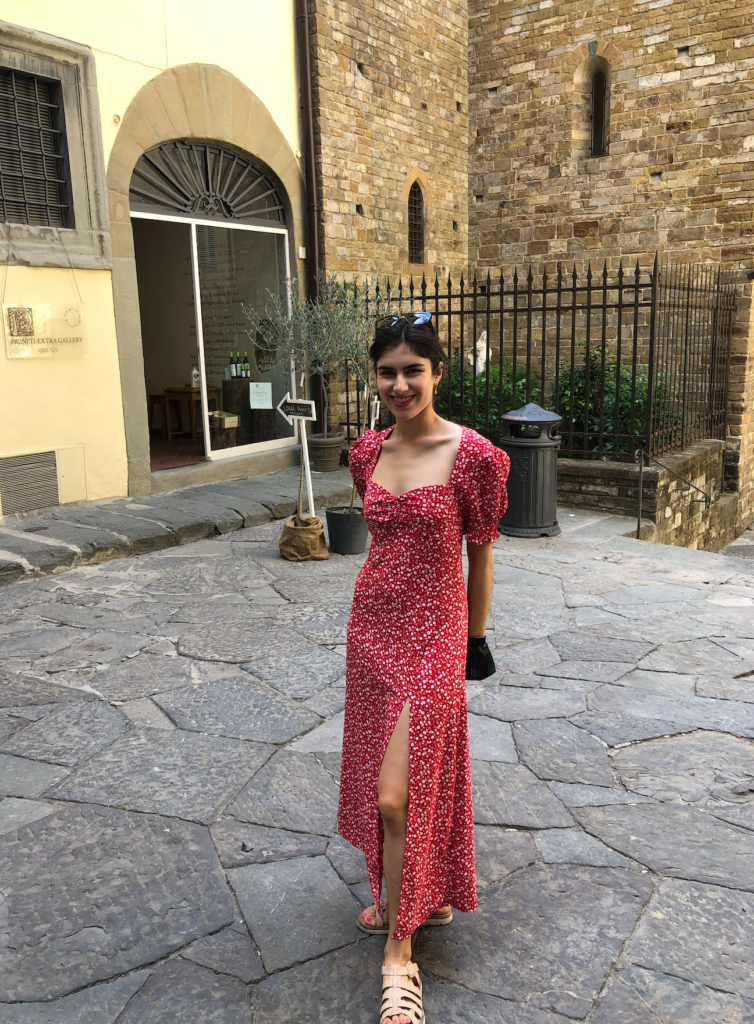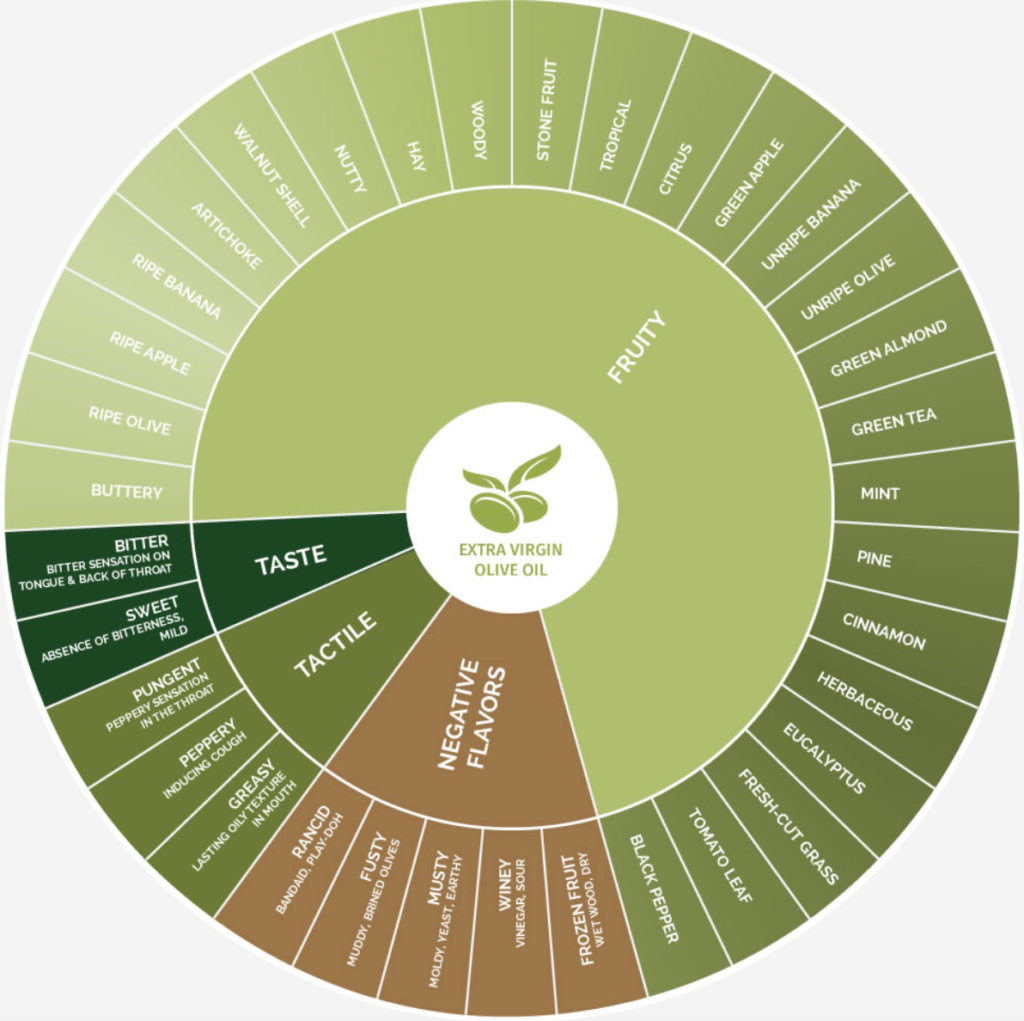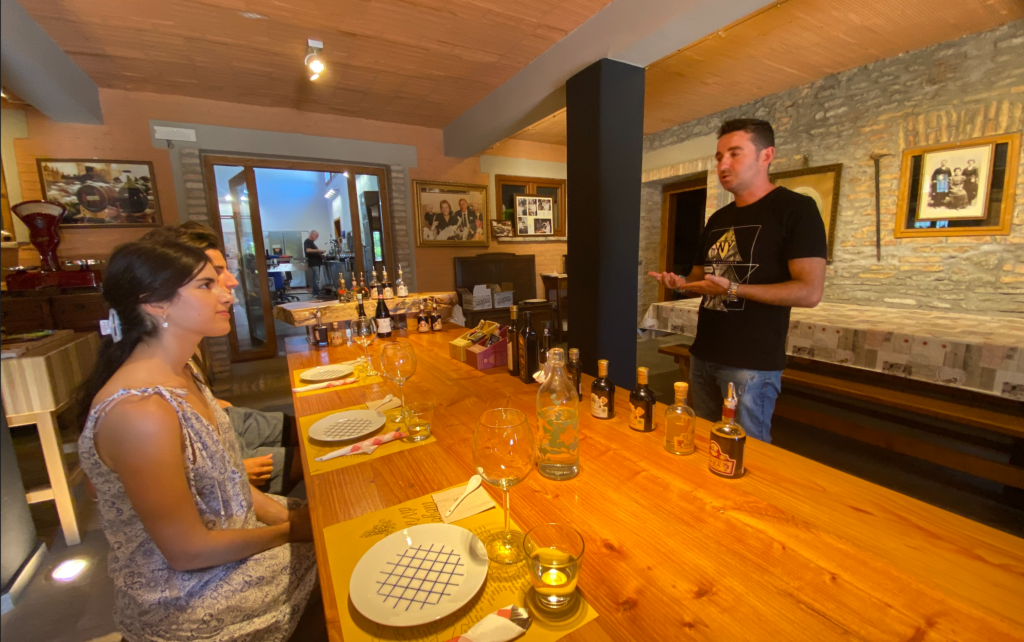
As a “from scratch” person, one of my passions is meeting and supporting other “from scratch” communities. The beauty of Italy is that there are many of them. In my recent trip to Italy, I visited the two basic ingredients of a proper salad: olive oil and balsamic vinegar. Andiamo!
Those who know me are aware of one of my life goals: to have an acre (or farm) of olive trees to make my own olive oil. While some may be sommeliers of wine, I consider myself to be a olive oil sommerlier-in-training.
Before I take you to the world of Pruneti olive oil, a little of background information might be helpful.
- Frantoio: olive press
- Extra-virgin olive oil: made from pure, cold-pressed olives
- Regular olive oil: a blend, including both cold-pressed and processed oils.
- What does the sediment at the bottom of the bottle mean? During the process of making olive oil, there is an optional step of filtration which removes olive particles suspended in the oil. Some producers choose to filter their olive oil, while others don’t. One is not necessarily better or worse than the other, but the unfiltered ones go rancid quicker.
- Catching the olives sans-bruising. If no net is used to catch the olives before they hit the ground, this process can result in bruised olives the crushing of which produces a lower-quality oil.
- Olive oil importation: 69% of imported olive oil samples and 10% of California-made olive oil in circulation in the United States have been reported to fail the international and USDA standards in a 2010 report by the UC Davis.
In particular, this past year I’ve gotten interested in trying the various olive oils of Oliveoillovers.com. I love this website because it explains the producers’ histories and offers suggestions for pairings. In Florence, there was the opportunity to try one of the olive oil brands’ products live and with a guide.
The Pruneti family personally oversees all stages of production through to the final product, ensuring that their oils reach the highest levels of quality. At our degustation, we tried five olive oils. But contrary to my preconception, you don’t dip bread in olive oil to taste it. You instead do the following:
- In a small shot glass, pour about 1/4-1/2 tsp olive oil. Cover it with the palm of your hand to heat it up for approximately 20 seconds. Uncover and smell the olive oil.
- Pour the olive oil at the tip of your tongue and press it to the top of your palate. Then, with the sides of your mouth open, suck the olive oil to the back of your mouth, sending it to your throat.
- Describe the olive oil! At first, I couldn’t come up with any words beyond “grassy”, “floral” and “strong”. Luckily, this wheel helps deepen the exact flavor notes.

Which olive oils did we take home?
- Pruneti Moraiolo Biologico
- “A monovarietal extra virgin olive oil from Frantoio Pruneti crushed from 100% Moraiolo variety olives grown in the Chianti area of Tuscany. This oil is intended to enhance the green, balsamic and very spicy notes that are typical of the Moraiolo variety. Strong notes of radish, almond, nuts, nutmeg, oregano and dried fig lead to a spicy, powerful black pepper finish. Recommended for cooked fish, white meat, grilled vegetables and drizzled over fresh, sweet cheeses. Most suitable for complex dishes, especially cheese-based.”
- This was my favorite. I enjoy it on top of my aglio e olio spaghetti or gemelli al pesto.
- Pruneti Leggero
- “The fruit line, through simple pairing tips, offers extra virgin olive oil as an added value to each preparation. Aimed at those who love cooking, but also at those who are now approaching the world of oil, this blend wants to be an oil designed for the dressing of all dishes with a light flavor. Like the white color of its label, Leggero is able to enhance, without overwhelming them, all foods with a particularly delicate taste.”
- This is perfect for a simple drizzle on a salad, like this tomato one I made for father’s day.
- Pruneti Intenso
- “The fruit line, through simple pairing tips, offers extra virgin olive oil as an added value to each preparation. Aimed at those who love cooking, but also at those who are now approaching the world of oil, this blend wants to be an oil designed for the dressing of all dishes with an intense flavor. Like the black color of its label, the Intenso is dedicated to those who love strong tastes, for which an oil with a strong character is needed.”
- I sometimes have a calling to just pour a spoon of olive oil and have it by itself. This is perfect for just that. Or seafood 🙂
Antica Acetaia Cavedoni Dal 1860
A day trip to Modena turned into a exploration to Antica Acetaia Cavedoni, a family-run balsamic vinegar business that has been making vinegar since 1860. However, only in the last 20 years has it opened its doors to the public market.

Like the olive oil industry, balsamic vinegar has its fair share of mysterious and deceitful tactics. For example, the IGP label (Indicazione Geografica Protetta), means the balsamic vinegar. Traditional balsamic vinegar begins with grape must —whole pressed grapes complete with juice, skin, seeds and stems. As such, grape must should be the first ingredient. There should be NO dyes or added sugar to the balsamic vinegar to increase the sweetness and give the “glaze” effect, without the proper aging. Even when a vinegar is labeled IGP, it may still have dyes added to it, so be careful!
We sampled balsamic vinegars from five years old all the way to 35, each providing its own unique flavor profiles based on age and the types of wood used for the barrels, such as oak, chestnut, cherry, juniper, and mulberry.
Grapes are cooked over a flame until concentrated by roughly half, then left to ferment naturally for up to three weeks, and then matured and further concentrated in a “batteria,” or five or more successively smaller aging barrels. Once a year the vinegar is bottled from the smallest cask in the sequence. Each cask is then topped up with vinegar from the next cask up, with the largest cask getting filled with the new yield.
Traditional balsamic is sold in wax-sealed bottles with unique identifying numbers. Traditional balsamic from Modena is only sold in a bulb-shaped 100ml bottle, a bottle designed by the Giorgetto Giugiaro, famous for designing the DMC DeLorean.
In addition to balsamic vinegar, the Cavedoni’s offered their grandmother’s recipe in the form of Saba, a sweet reduction of local apples (Cotogne), grape must, cloves, and cinnamon. This was paired with a fresh ricotta made that day. At home, I like to pair it on my vegan greek yogurt or bircher muesli.
When balsamic vinegar tastes so luxurious, you realize that pairing it with a salad is quite limiting. This balsamic vinegar marries nearly everything, from strawberries to bread to even a flourless chocolate Caprese torta. I have a couple ideas in mind for my own pairings including:
- Apple cake (GF + DF)
- Creamy lemony almond shortbread (GF + V)
- Moroccan donuts (V)
- Lava brownies (GF + V)
- Chickpea bruschetta (V, GF option)
- Swiss chard toast ft. black garlic (V, GF option)
- Ottolenghi’s Cauliflower Steaks and Purée with Walnut-Caper Salsa (GF + V)
- Melissa Clark’s shallot brussel sprouts (GF, V option)
I hope you’ve enjoyed this dive into olive oil and balsamic vinegars. Hopefully it has inspired you to look at the back of your own olive oil and vinegar bottles to think more about where its coming from and who is making it. Buon appetito!